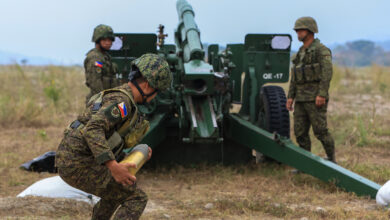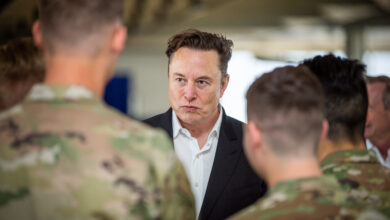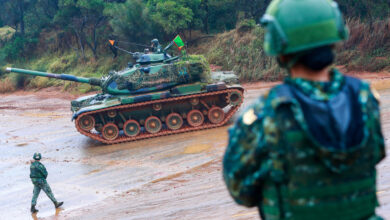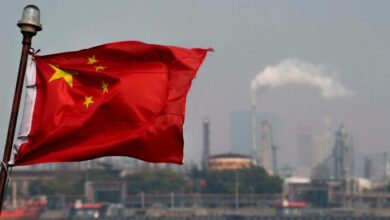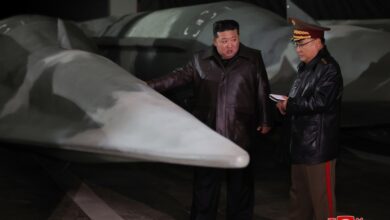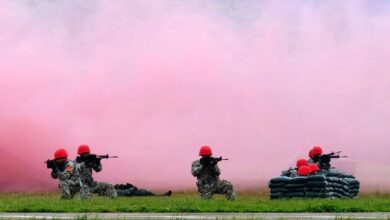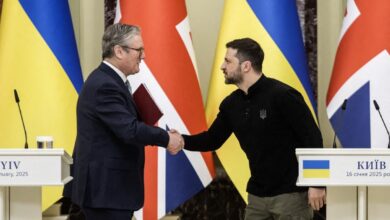Possible Scenarios for a Chinese Invasion of Taiwan
Taiwan goes to the polls on Saturday in a closely-watched election that Chinese officials have described as a choice “between war and peace.”
Frontrunner candidate Lai Ching-te has drawn ire from Beijing, which calls him a “stubborn worker for Taiwan independence” and an “outright saboteur of peace.”
Beijing claims Taiwan as part of its territory and has vowed to seize the island one day for “unification.”
Experts consider an all-out invasion unlikely in the near term, but discussions are still happening within security circles from Taipei to Washington.
Here are some of the options Beijing could deploy if it were to attack the island:
‘Decapitation’
Beijing has been increasingly flexing its military might, sending in fighter jets daily around the island, while its naval vessels have a near-constant presence around Taiwan’s waters.
It has also conducted at least two massive war games in the past year and a half, while its aircraft carrier Shandong has made more frequent passages through the sensitive Taiwan Strait separating the island from China.
Based on past drills, “it is most likely” that China would use air and missile strikes to aim for Taiwan’s military infrastructure, said Ou Si-fu, an analyst at Taiwan’s Institute for National Defence and Security Research.
He calls it the “decapitation” scenario, as the missile bombardments would hit Taiwan’s command center, air force, naval bases, as well as its ammunition depots.
“When you cut off the political or military figures, then you cannot command the troops to defend (Taiwan),” Ou told AFP.
Blockade
China could choose to seize Taiwan’s outlying islands of Kinmen and Matsu — both sitting around 10 kilometers (six miles) off the coast of the mainland.
It could also attempt a full blockade of the entire Taiwan island, preventing anyone — or any shipments — from getting in and out.
In April last year, forces from China’s People’s Liberation Army (PLA) conducted three days of drills simulating a blockade of the island in response to then-US House speaker Kevin McCarthy meeting Taiwanese President Tsai Ing-wen in California.
“The PLA can execute blockades on our ports, airports, military facilities, and air and sea lines of communication, to achieve its operational goal of ‘grounding all aircraft and anchoring all vessels’,” Taiwan’s defense ministry warned in its 2023 report.
But analysts say a blockade would take time to cause pain, and cutting off the Taiwan Strait — a busy international shipping route — would not only hurt Taipei but could force an intervention from a third country.
“It is unclear how long China could sustain a siege, if Taiwan and its partners were to find ways around a blockade,” said the International Crisis Group (ICG) in a recent report.
“A protracted campaign would be contrary to the People’s Liberation Army’s goal of winning a quick war.”
A blockade would cost the global economy “well over $2 trillion” at minimum, according to Rhodium Group — a punishing impact not just for Taiwan, but also China.
Amphibious Landing
If Chinese President Xi Jinping makes good on his pledge to unify Taiwan with the mainland, his forces would have to occupy the island, Ou said.
“And to occupy Taiwan, they need to conduct an amphibious campaign.”
But amphibious assaults are complex and exceedingly difficult, and Taiwan’s mountainous geography — coupled with its unforgiving monsoon weather conditions — is a deterrence.
There are some vulnerable spots on the island though — small, so-called “red beaches” that are most suitable for such a large-scale military landing.
One of the closest beaches to the capital Taipei is in northern Taoyuan city, home to the island’s largest international airport.
“If (China’s PLA) occupy the airport, they can use it to transport their troops, their ammunition, their food,” Ou warned.
But the likelihood of a full Chinese amphibious assault on Taiwan “is low in the near-term because the odds of Beijing failing are not insignificant,” said Amanda Hsiao, a China analyst at ICG.
Instead, the most pressing concern is “Beijing’s tightening squeeze on Taiwan” — something that is already happening daily.
“We see evidence of this every day in the form of more proximate and frequent PLA activities, the amplification of narratives that are favourable to Chinese interests, and the weaponisation of cross-strait trade,” Hsiao told AFP.
Taiwanese officials also fear China could launch a major cyberattack aimed at knocking out the island’s key infrastructure such as communications, power, and banking.



